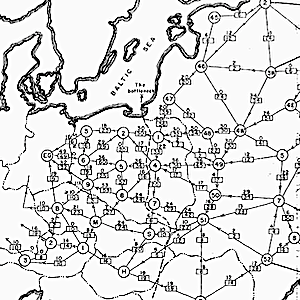-
-
Two Kinds of Paths
-
Polynomials vs. Exponentials
-
Divide and Conquer
-
Big O and All that
-
When the details don't matter
-
Quiz 1 (self-assessment)
-
-
-
Divide and Conquer Redux
-
Dynamic Programming
-
Greedy Algorithms
-
Landscapes
-
Reductions and Translations
-
Lessons So Far
-
The Best of All Possible Algorithms
-
Complexity Wrap-Up
-
Quiz 2 (self-assessment)
-
-
-
Finding versus Checking
-
Circuits and Formulas
-
More NP-complete Problems
-
P versus NP Problem
-
Existence and Nonexistence
-
Above and Beyond
-
-
-
Real World Problems
-
Phase Transitions
-
Random Problems
-
Solvability Threshold
-
Modeling Differential Equations
-
Landscapes, Clustering, Freezing, and Hardness
-
-
-
Building Blocks: Recursive Functions
-
Building Blocks: Partial Recursive Functions
-
λ Calculus
-
Turing Machines
-
The Halting Problem
-
The Grand Unified Theory of Computation
-
The Analytical Engine
-
Cellular Automata
-
Tile-Based Computation
-
Dynamical Systems
-
Quiz 5 (self-assessment)
-
-
-
More from Cris Moore
-
Other ComplexityExplorer resources
-
4.2 Phase Transitions » Ising Model interactive
The Ising Model: temperature dependence
In his 1924 Ph.D. thesis, physicist Ernst Ising presented a mathematical model that described the properties of iron magnetism. The one-dimensional model consists of a series of fixed vertices or sites – iron atoms – that exist in either of two states, or spins, -1 and +1. Each site can interact with its neighbors; neighbors with the same spin have lower energy. The model was extended to two dimensions by Lars Onsager, an advance that importnatly showed that the system undergoes a phase transition. (Onsager recieved the Nobel Prize for his work on thermodynamic irreversibility.)
Ferromagnetism exhibits a critical dependence on temperature. The lattice Ising Model recapitulates these temperature-dependent phase transitions. The simulation here lets you investigate how temperature affects the coupling of spin states throughout the lattice.
Exploring the model
-
Slowly vary the temperature. The current state of the system is marked by a large circle. What is the value of the critical temperature?
-
What happens if you start from the lowest temperature? From the highest temperature? (reset > change temperature > go)
-
Try manipulating spin locally with the cursor. What happens? At different temperatures?
More About The Ising Model
In the Ising Model, a lattice site represents an atom (or any discrete particle of a fixed location) whose "spin" can either point up (+1, yellow/orange) or down (-1, green). When more spins are aligned in one direction compared to the other, the system occupies a state in which its magnetic field is measurable by an observer. In other words, the system is in a magnetized phase. In the real world, this would correspond to an iron magnet. We can quantify the magnetization of the whole system by computing the mean magnetization per lattice site, (i.e. the sum over all lattice sites divided by the total number of lattice sites), displayed as a function of temperature in the magnetization-temperature plot.
The system is not static. A lattice site can spontaneously flip its state based on a simple physical property: the potential energy between two spins is larger when they are not aligned. A lattice site is driven to flip its state if this flip would minimize the potential energy in the (local) system, ie. among its four neighbors. The higher the temperature, the greater the probability that a lattice site flips its state even if this would increase the system's total energy. It turns out that there's a critical temperature after which no magnetization is possible - a phase transition. For temperatures lower than the critical temperature, the system will reach a magnetized phase. For temperatures higher than the critical temperature, the system's magnetization will go to zero.
